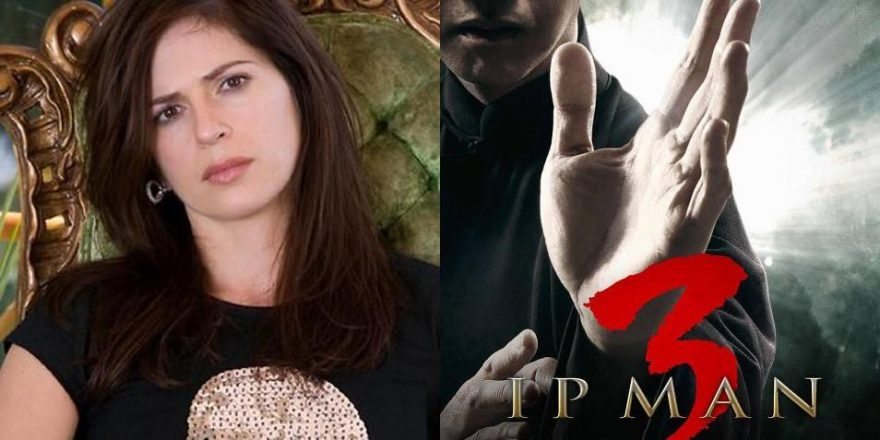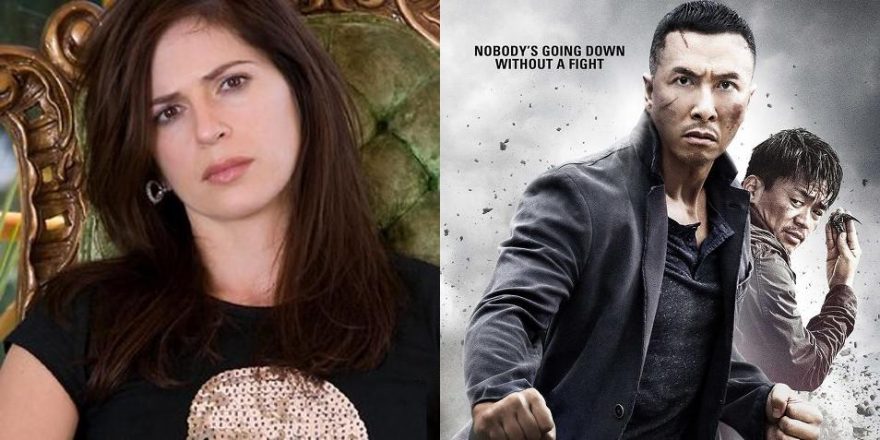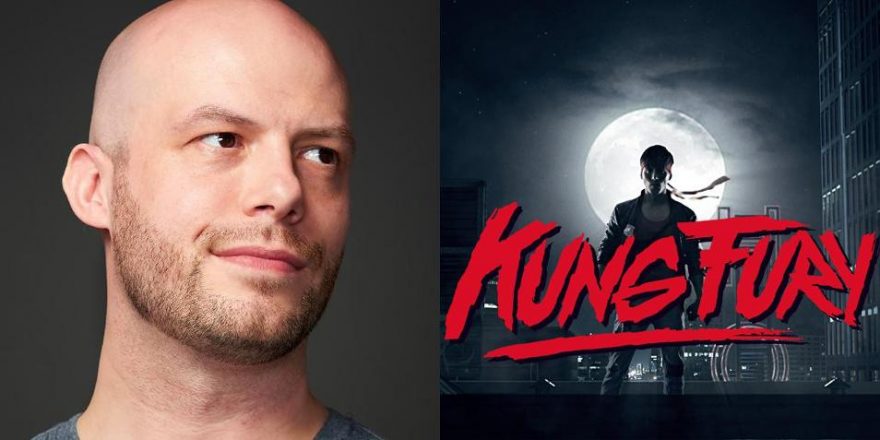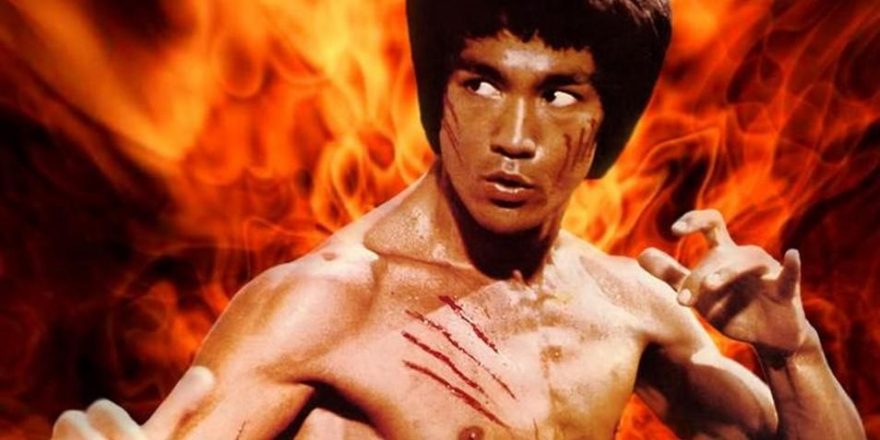In a recent interview, Donnie Yen stated that, because he’s now in his early 50s, Ip Man 3 might be his last kung fu movie. I don’t think there’s been another retirement statement from an actor that has made me sadder. Yen’s likeability and gentle demeanor have made him the perfect person to portray the famously soft-spoken Wing Chun grandmaster Ip Man, and few people realize how much skill it takes to shoot endlessly long fight scenes while keeping a relaxed poker face the way Yen has mastered it.
So knowing this could be the last time I get to see Donnie Yen as Ip Man, I was in a very forgiving state of mind. Some stuff did indeed have to be forgiven, but let’s start with the good …
Danny Chan Kwok-kwan’s appearance as Ip Man’s most famous student, Bruce Lee, was a delightful homage to the legends of both men: the master teacher and the uber-gifted student. A display of Lee’s speed – with the help of cigarettes, matches and water – is fun to watch but ultimately, like many other scenes in this installment of the series, seemed disconnected from the main storyline. I’m not sure if the filmmakers were trying to set up a future franchise here or if they just finally wanted to include the story of Bruce Lee being Ip Man’s real-life student in one of the movies. Either way, it seemed out of place, though fans of the genre won’t be bothered by it.
The charismatic and equally physically skilled Zhang Jin plays Cheung Tin-chi, an aspiring Wing Chun grandmaster who it looks like is being set up as Ip Man’s antagonist, though he never fully becomes that. Unfortunately, the writing is a bit all over the place on this one and doesn’t come close to the superb storytelling of Ip Man and Ip Man 2, but again, those of us who are nuts about martial arts movies would only cry foul if the fight scenes were lacking, and luckily they aren’t.
The first great fight scene kicks off about 25 minutes into the movie when a large gang of ruffians, sent by shady property developer Frank (Mike Tyson), attacks the school attended by the sons of both Ip Man and his maybe-antagonist Cheung Tin-chi. The fight starts off with Ip Man, as always, facing several opponents, whom he elegantly takes out one by one. But there seems to be an endless supply of gang members, so Ip Man is relieved when Cheung Tin-chi passes by and joins him in the fight. This is where it gets interesting, because both men fight Wing Chun style, but director Wilson Yip and his action choreographers masterfully add an edge to Cheung Tin-chi’s fight. There’s something unsettling and dark in how Cheung takes out his opponents, and it’s not lost on Ip Man.
The next good, albeit short, fight scene comes 15 minutes or so later when Cheung Tin-chi takes money to fight Tin Ngo-san (Bryan Leung), an older, local martial arts master, in his umbrella shop. And yes, I said umbrella shop; Hong Kong martial arts filmmakers excel at using props and set design in fight scenes like no one else. Because I’m familiar with the tricks of the trade, my heart rate went up the minute Cheung entered the tiny, dusty store crowded with rows of umbrellas. I knew I was in for beautiful mayhem and flying carnage behind clouds of dust – and that’s exactly what happened.
One of the film’s narrative threads concerns the suddenly ailing health of Ip Man’s wife. While I am all for drama – even when it occasionally slips into Hong Kong-style melodrama (and actors Lynn Hung and Donnie Yen are certainly skilled enough to deliver a heavy storyline) – I just wish this script hadn’t tried to be so many things at once.
Fortunately, the writers came up with a solution to inject a couple of great martial-art set pieces even after Ip Man decides he only wants to spend time with his wife, rather than fight or protect anyone anymore. Frank, upset that all his goons got their asses kicked by Ip Man, sends a Thai boxer to the clinic where Ip Man’s wife, Wing-sing, receives treatment, which leads to a fast, tense fight scene that starts off inside an elevator. Ip Man must fight in this small space while keeping his wife out of harm’s way, until the action spills outside. I love how this was shot, the manipulation of frame speed every time he blocks a punch or kick that could have potentially killed his wife, the tight close-ups on body parts hitting or blocking, inserts of fast and fancy footwork, bird’s-eye view camera angles as the fight moves down four flights of stairs – this is what it’s all about.
And when we finally get to the martial artists’ magnum opus, the final fight between Cheung Tin-chi and Ip Man, it doesn’t let us down. The two start off fighting with dragon poles, and this part is beautifully choreographed and shot, as well as masterfully sound-designed.
Next, the men move on to fighting with butterfly swords. Halfway through, I almost started crying it was so beautiful. The hours it must have taken to memorize this choreography, I can only imagine.
The heavy use of weapons was new to the portrayal of Wing Chun in the Ip Man series and I thought this was an excellent choice. Nevertheless, Wing Chun is most beautiful when fought hand-to-hand, and so this was, as expected, how the final set piece reaches its climax.
I must have watched this last part of the fight at least 20 times in a row (this is a thing all martial artists or martial arts fans do – I’m not crazy), and I still can’t get enough of it. It’s just a perfect marriage of martial arts and filmmaking skill, and that is rarer than you can imagine. The speed, precision, framing, extensive coverage and – what I noticed most in this part – brilliant editing, resulted in one of the best fight scenes in the genre’s history. I have been walking around in a daze since I’ve seen it, wondering if in my lifetime I’ll ever get the resources, time and opportunity to direct a fight scene properly like that. A girl can dream….






